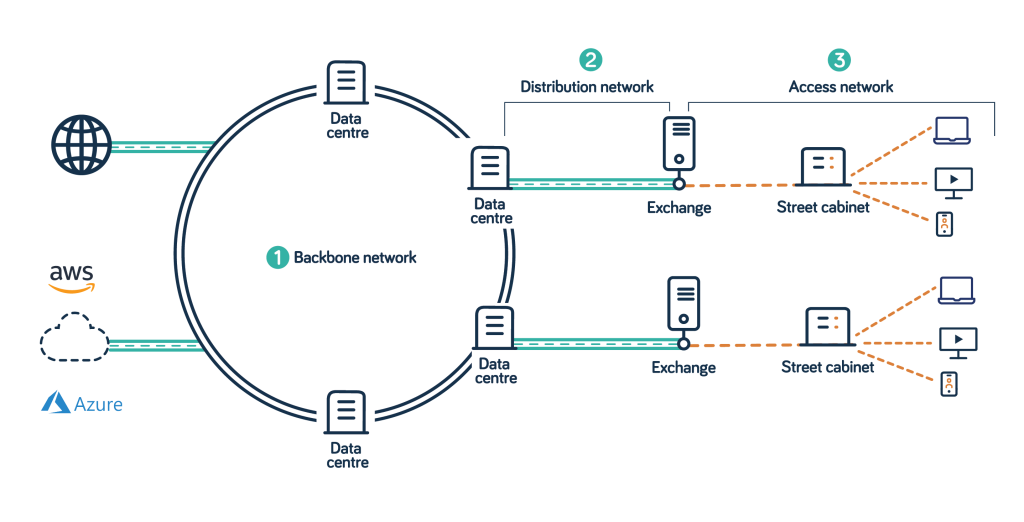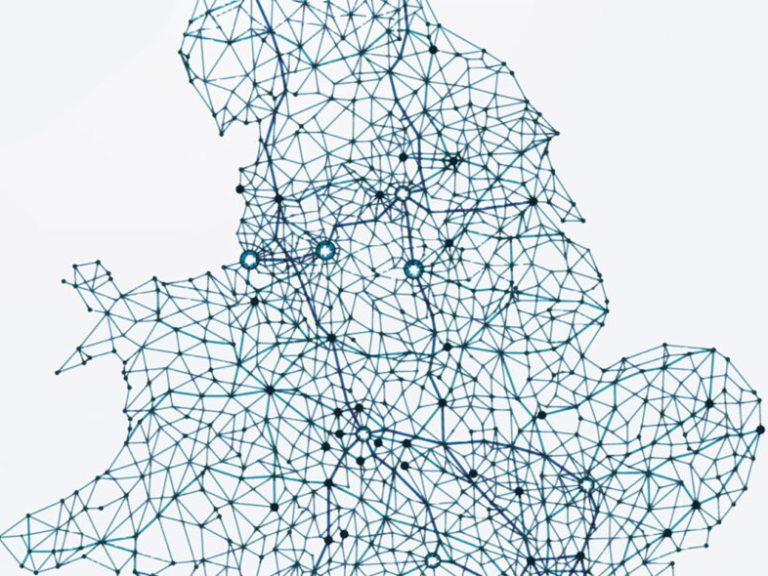What is a backbone network?
For example, a backbone network can connect different local area networks (LANs) in one building or across many buildings in a business park or university campus. Large enterprises with geographically dispersed sites might create a backbone network to connect their sites in a wide area network (WAN).
Similarly, backbone networks connect different cities, regions or countries. For instance, internet service providers (ISPs) and data centres use backbone networks to provide high capacity connectivity between dispersed locations.
How does a backbone network work?
In addition, wireless satellite or microwave links, or a hybrid core network of wired and wired connections, can be used to reach remote areas where laying cables is impractical.
While core networks vary, they use standard technologies like Internet Protocol (IP), Multiprotocol Label Switching (MPLS) and Dense Wavelength Division Multiplexing (DWDM) to ensure seamless communication between subnetworks.
Backbone network vs access network
A backbone network is the high capacity core that connects different regions, data centres and ISPs to the internet and cloud services.
A distribution network, which may include backhaul, connects the backbone network to an access network, distributing traffic to regional or local metropolitan area networks (MAN), streets or buildings.
An access network, also known as the “last mile”, connects end users or subscribers to the distribution network, providing access to the internet and cloud services.

Backbone network functions
Aggregation:
Backbone networks aggregate data traffic from various sources, including SD-WAN, LANs, WANs and access networks.
Routing and switching:
Routers and switches efficiently forward data packets across different parts of the network.
Redundancy:
Core networks are typically designed with backup routes and failover mechanisms to maximise reliability.
Authentication and security:
Backbone networks use encryption, firewalls and other measures to prevent unauthorised access, data breaches or other cyberattacks
Traffic management:
As core networks are centralised, they allow you to optimise the data flow, ensuring Quality of Service (QoS) to prioritise critical types of traffic.
Typically, backbone networks can accommodate much higher capacities than the local networks they serve. They’re usually designed to scale as you grow to meet the ever-increasing demand for data.
Types of backbone networks
Serial backbone:
A simple point-to-point connection links two or more connectivity devices, such as connecting a hub to a subnetwork.
Distributed backbone:
Numerous connectivity devices link to various central hubs, switches, or routers in a layered hierarchy, which is typically used for most large core networks.
Collapsed backbone:
All connectivity devices link back to a central location in a star topology, which is easy to manage but has a single point of failure.
Parallel backbone:
Connectivity devices link to a central location but with duplicate connections providing redundancy and resilience.
Backbone network solutions
– Seamless connectivity to grow your network
– Redundancy and resilience to ensure customer experience
– Flexibility and scalability to meet growing demand
At GOIP, we provide backbone networks for businesses across the ACAP.
Optical connectivity is the fabric of any large backbone network, and we offer a range of optical wavelength services
to suit your business’s needs with:
High availability: Up to 99.95% uptime across our ACAP network
Ultrafast connections: Choose between 10Gbps, 100Gbps and 400Gbps
Flexibility: Connectivity options to suit your business and customers nationwide




